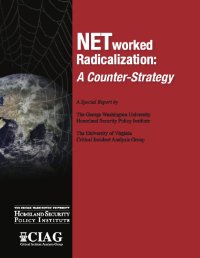Networked Radicalization: A Counter-Strategy
By F. Cilluffo, G.B. Saathoff, et. al
Savvy use of the Internet has empowered terror networks to expand their reach beyond national borders by enabling wide distribution of a compelling message and social connectivity with new audiences. Use of computer-mediated communication (CMC) has made a range of terrorist operational activities cheaper, faster, and more secure, including communications, fundraising, planning and coordination, training, information gathering and data mining, propaganda and misinformation dissemination, and radicalization and recruitment. The list is long, and not even complete. Before the Internet, terrorists seeking to communicate with one another through electronic means used telephones or radios, which could be tapped. Terrorists seeking to offer training meant congregating trainers and trainees in a fixed training location, exposing the group to capture or worse. Terrorists or their supporters engaged in fundraising or recruitment often pursued these aims in public settings. And terrorists researching a potential target often did so at public libraries and bookstores, subjecting them to surveillance in these public spaces. Now, with the Internet, all of these same activities can be conducted in relative anonymity from safe locations across the globe.
Washington, DC: Homeland Security Policy Institute, The George Washington University; Charlottesville, VA: The Critical Incident Analysis Group (CIAG) University of Virginia School of Medicine, 2007. 34p.


